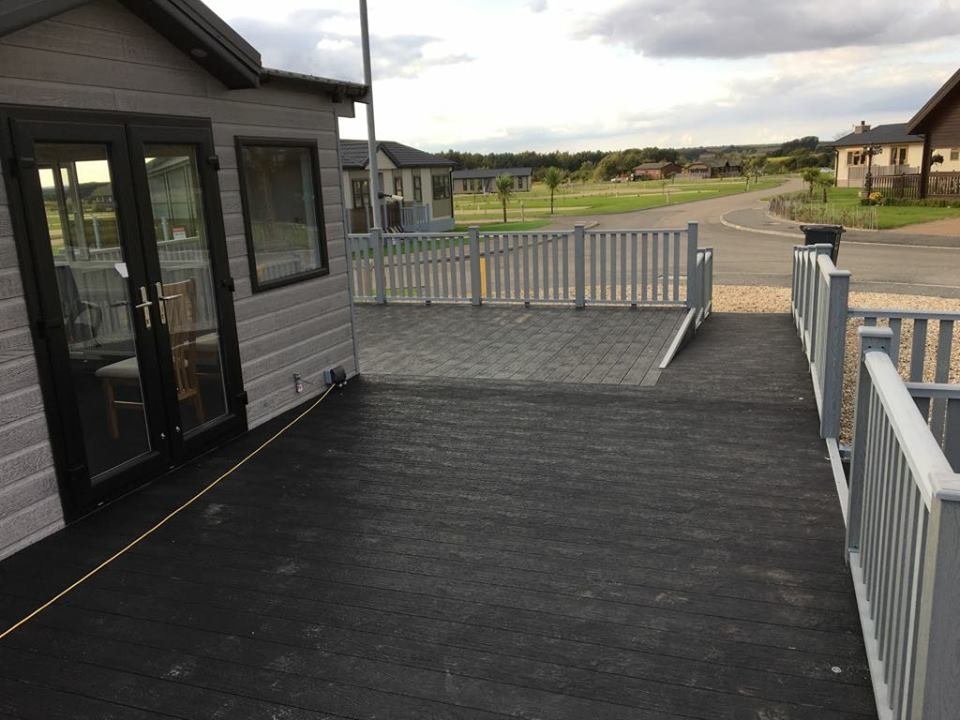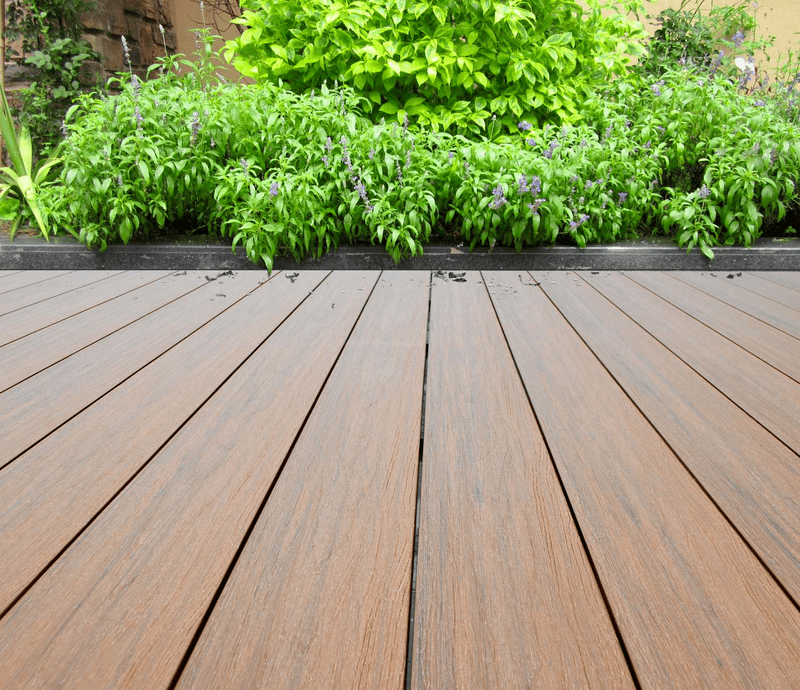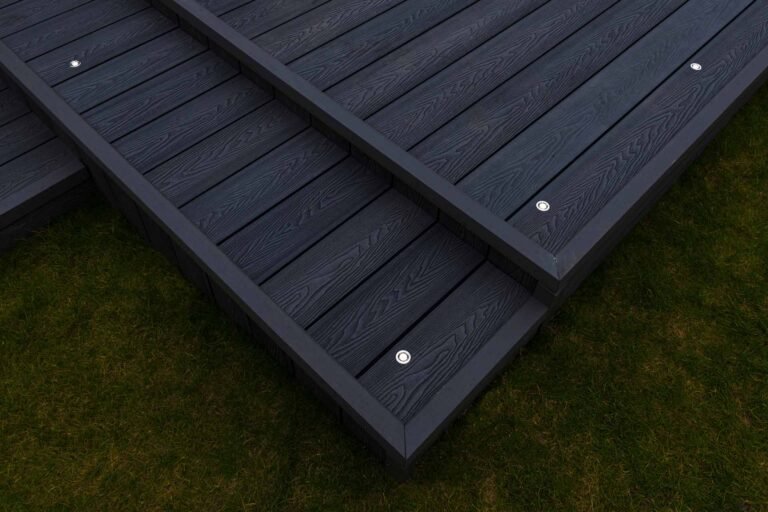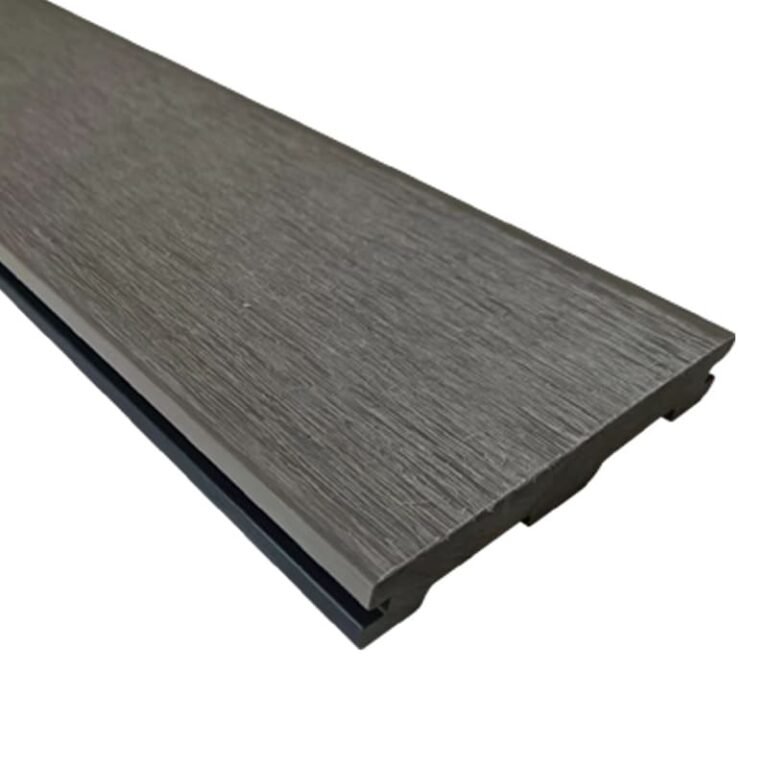Choosing decking feels risky. Wood demands work. Cheap boards fail. I have felt the same pressure. Composite seems easy. Here is what actually holds up.
Composite decking delivers long life and low upkeep, but costs more and runs hotter than wood. If you want durability and steady supply, it is often worth it. Pick capped boards and lighter colors to cut heat and stains.
I will keep this simple and practical. I will share what works in real jobs, and what to avoid. I will point to choices that cut risk. Stay with me to save time, budget, and stress.
What is composite decking made of, really?
Decking choices can feel vague. Labels promise a lot. Specs hide the truth. I have seen buyers pay for claims that do not show on site. Let us clear the fog first.
Composite decking blends wood fibers with plastic, often HDPE, then adds a protective cap. The core gives strength. The cap blocks stains, UV, and water. Profiles vary by load, span, and weight.
Core, cap, and profile
Composite decking has two main parts: the core and the cap. The core mixes wood flour and plastic for stability. The cap is a co-extruded shell that resists stains and fading. Boards come as solid or hollow. Solid boards suit high traffic and commercial spans. Hollow boards cut weight and cost for residential decks and balconies.
How the parts work together
The cap seals the surface and improves color hold. The core handles load and expansion. Grooved edges take hidden clips for clean lines and faster install. Ungrooved edges suit picture framing and stairs.
| Part | Material | What it does | When to choose |
|---|---|---|---|
| Core | Wood flour + HDPE | Strength, screw hold | All projects |
| Cap | Co-extruded polymer | UV, stain, moisture shield | Sun, food, or heavy use |
| Profile | Solid or hollow | Load vs weight | Solid for spans; hollow for budget |
I still test every new line by soaking, freezing, and dragging a chair leg across it. Lab data helps, but field tests tell the truth.
What real advantages can I expect?
Promises are cheap. You need gains you can measure. I always ask how a feature saves time or money after year one. That is where composite shows value.
Composite shines in durability and low upkeep. It resists rot, splinters, and termites. Cleaning is simple. Color options are wide. Over 10 years, total cost often beats wood, even with higher upfront price.
Where composite wins
Composite does not need yearly staining. It resists moisture and pests. The cap blocks coffee, oil, and wine if cleaned soon. Many lines carry 15–25 year fade and stain warranties. Install with hidden clips to speed work and reduce call-backs.
Measurable gains
I like to track costs beyond purchase. Add install time, fasteners, finish, and yearly care. Over a decade, composite often cuts the total bill.
| Benefit | What you get | Impact on site |
|---|---|---|
| Low maintenance | No stain or seal | Less downtime and labor |
| Long life | 15–30 years typical | Fewer replacements |
| Safer surface | No splinters | Better for families and pets |
| Consistent supply | Color control | Easier batch matching |
I learned this the hard way on a seaside job. The client chose wood to save money. After two wet winters, we stripped and refinished twice. The third year, we switched to capped composite and stopped the bleed.
What downsides should I plan for?
Every material has trade-offs. I try to name them early, then plan around them. Surprises cost more than good planning.
Main drawbacks are higher upfront cost, more heat on dark boards, and limited spot repairs. Plan color, spacing, and airflow well. Use caps and lighter tones to reduce heat and stains.
The common issues
Dark composite can run hot under full sun. Thermal movement needs correct gapping. Scratches can show on some emboss patterns. Deep damage often needs a board swap. Static can build in dry, windy sites.
How to reduce risk
A few choices up front solve most of this.
| Issue | What happens | How I handle it | When it matters |
|---|---|---|---|
| Heat | Hot underfoot | Light colors, shade, airflow | South-facing decks |
| Expansion | End gaps open/close | Follow gapping chart | Big temperature swings |
| Scratches | Chairs mark | Use pads, choose deeper emboss | Dining zones |
| Stains | Oil marks | Cap layer, fast clean | BBQ areas |
| Static | Shock feel | Anti-static cap, grounding | Dry, windy sites |
I always mock up two boards on site for a week. One light, one dark. Clients step on both at noon. The choice becomes easy.
How do I choose the right deck for climate and budget?
Options can overload you. I felt that too when I priced my first hotel terrace. I broke the choice into climate, use, and structure. It worked then. It works now.
Match board type to sun, rain, salt, and load. Pick cap thickness and color for your site. Use solid boards for long spans. Run a 10-year cost, not just purchase price.
Simple decision steps
Start with climate. Full sun? Go light and capped. Coastal air? Choose stainless screws and closed ends. Heavy traffic? Use solid boards and tighter joist spacing. Tight budget? Use hollow in low-load zones and solid on stairs.
Quick selector table
| Scenario | Recommendation | Why |
|---|---|---|
| Hot, sunny | Capped, light color, matte finish | Cooler surface, less glare |
| Wet, shaded | Deep emboss, high slip rating | Better grip when damp |
| Coastal | Solid board, sealed ends, SS fasteners | Less water ingress and corrosion |
| Commercial | Solid board, 300–350 mm joist spacing | Load and longevity |
| Value build | Hollow field, solid edges | Save cost, keep structure strong |
I also check the warranty fine print. Look for fade and stain clauses, commercial coverage, and movement limits. If terms look vague, I walk away.
How do I validate a supplier before I commit?
A good board can still fail you if the factory cannot ship or support you. I have made that mistake once. I will not make it again, and neither should you.
Check certifications, test reports, batch consistency, and after-sales terms. Ask for samples from current production. Verify lead times, MOQ, and packaging. Demand clear warranty and claim steps.
A fast but firm checklist
Ask for FSC for wood source and ISO for systems[^1]. Look for Intertek or equivalent test data on slip, UV, and fire where required. Confirm CE where needed. Request three random samples from the same run to check color match. Do a coffee and oil test at home.
What I verify every time
| Area | What I ask for | What good looks like |
|---|---|---|
| Certifications | FSC, Intertek, CE, ISO | Valid, recent, traceable |
| Performance | Slip, UV, stain tests | Reports with methods listed |
| Consistency | Three-run samples | Color within tight delta |
| Logistics | Lead time, MOQ, pallets | Clear timelines and packaging spec |
| Warranty | Terms and claims path | Named contact, fast response |
I also ask for joint marketing support. Samples, displays, and images help you sell faster. Good partners say yes and deliver on time.
Conclusion
Composite wins on life and low upkeep. Plan for heat and movement. Choose caps, color, and profile for your site. Test suppliers and protect your margin.
[^1]: Learn how certifications like FSC and ISO ensure responsible sourcing and quality management in decking products.










